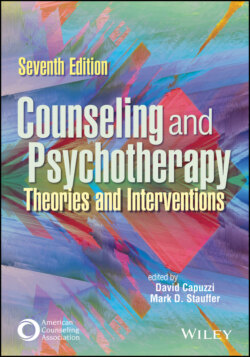Читать книгу Counseling and Psychotherapy - Группа авторов - Страница 87
Strategies of Disconnection/Survival
ОглавлениеRCT posits that despite people’s desire for connection, they sometimes behave in ways that keep them out of the connection they desire. For example, people may express themselves in ways that hold others at a distance. In ineffective efforts to maintain closeness, people may subjugate their needs to keep others from truly knowing them. Or perhaps they may rage at others when what they really want is to be understood and accepted. RCT refers to these behaviors as strategies of disconnection. These strategies are seen as self-protective mechanisms designed to prevent further wounding and/or to sustain existing connections, however limited.
RCT explains that strategies of disconnection may also be conceptualized as strategies for survival. In other words, while these behaviors may disconnect people from others, people may engage in these strategies because they feared at an early age that the alternative could result in loss, grief, or abandonment. They disconnect from their authentic experience out of fear and/or self-preservation.
Children are particularly adept at hiding their feelings out of fear. However, over time, they may not be able to distinguish between their genuine feelings and needs and the strategies they present to others. Counselors who understand how and why these behaviors develop can honor these limiting strategies for what they are and for what their clients perceive them to provide. When counselors honor these disconnecting strategies, they understand the motivation and context behind them. They provide what RCT refers to as radical respect (Jordan, 2018), or a deepened appreciation for their clients’ functioning and coping strategies. They do so while cocreating a growth-fostering therapeutic relationship that supports what RCT describes as the five good things (Miller, 1986).
